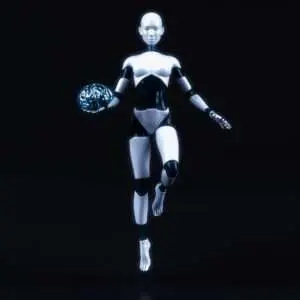
Hello, tech enthusiasts! Today at Blue Goat Blogs, we’re delving into the captivating world of Generative AI. This isn’t just another tech term; it’s a groundbreaking development stirring up creativity and innovation across numerous fields. Let’s unfold what Generative AI is and why it’s becoming a buzzword in the tech community.
What is Generative AI?
Generative AI refers to a type of artificial intelligence that can generate new content, from images and music to text and beyond. It’s like giving an artist a blank canvas, but this artist is an AI algorithm. Unlike traditional AI, which analyzes and interprets data, generative AI goes a step further – it creates.
The Mechanics Behind Generative AI
Generative AI works by using advanced algorithms to analyze vast datasets and then uses this information to generate new, original outputs. Two popular types of models used in generative AI are:
- Generative Adversarial Networks (GANs): These involve two neural networks – a generator and a discriminator – competing against each other. The generator creates content, and the discriminator evaluates it. This competition improves the quality of the output dramatically.
- Variational Autoencoders (VAEs): These are used for producing new data that’s similar to the input data, often used in image generation and editing.
The Creative Powerhouse: Applications of Generative AI
Art and Design
- Digital Art: Generative AI is creating a stir in the art world. Artists use these tools to create complex, mesmerizing pieces that would be impossible or extremely time-consuming to make by hand.
- Product Design: Companies use generative AI to design everything from furniture to fashion, creating unique, optimized designs.
Writing and Content Creation
- Automated Journalism: Generative AI writes simple news stories, freeing up human journalists for more complex reporting.
- SEO Optimized Content: Generative AI can produce SEO-friendly content for digital marketing, streamlining the content creation process.
Music and Audio
- Music Composition: AI is now composing music, pushing the boundaries of creativity, and generating new styles and sounds.
- Sound Design: Generative AI creates rich, immersive soundscapes in film and gaming.
The Ethical and Creative Implications
As with any powerful technology, generative AI brings its own set of ethical considerations. There are concerns about the potential for misuse, like deepfakes, and questions about copyright and ownership of AI-generated content. Balancing the benefits of this technology with responsible use is a key challenge in the future.
Generative AI in Cybersecurity
Interestingly, generative AI has applications in cybersecurity too. It can be used to simulate cyber-attacks, helping to test and improve security systems. This ‘offensive’ use of AI can be a game-changer in preparing for and preventing cyber threats.
The Future of Generative AI
The future of generative AI is as exciting as it is uncertain. We’re likely to see more personalized content, innovative design solutions, and new forms of entertainment. As this technology evolves, it will continue to blur the lines between human and machine creativity.
Conclusion: Embracing a New Wave of Creativity
Generative AI is not just a technological advancement; it’s a new form of artistic and creative expression. Its vast and largely untapped potential offers exciting possibilities for innovation across various sectors.
At Blue Goat Blogs, we’re excited to see how generative AI continues transforming the landscape of creativity and innovation. Stay tuned for more insights into the ever-evolving world of technology and cybersecurity!
Remember, in generative AI, the only limit is the imagination itself. Let’s embrace this new wave of creativity and see where it takes us!
